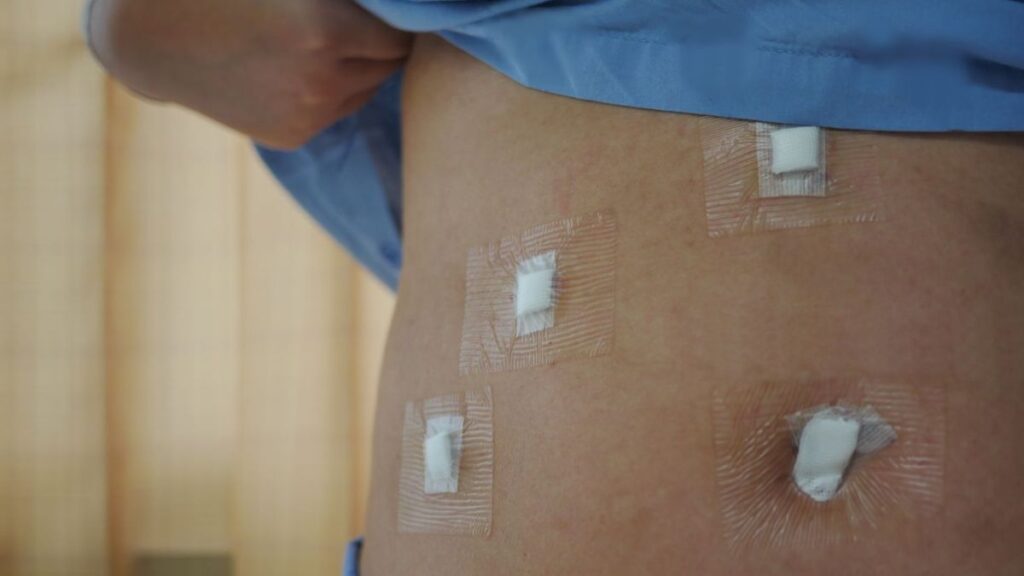Introduction:
When gallstones become a source of recurring pain and discomfort, surgical intervention is often necessary. Cholecystectomy, the surgical removal of the gallbladder, is a common and effective treatment for gallstones. In this blog, we will explore what to expect from cholecystectomy surgery, including the procedure, recovery, and potential benefits.
Why Cholecystectomy?
Gallstones can cause intense abdominal pain, nausea, and other unpleasant symptoms. When these symptoms become recurrent and severely impact your quality of life, surgical removal of the gallbladder may be recommended. Cholecystectomy is a safe and established procedure used to alleviate gallstone-related issues.

Types of Cholecystectomy:
There are two primary methods for performing cholecystectomy:
Laparoscopic Cholecystectomy (Keyhole Surgery):
- In this minimally invasive procedure, small incisions are made in the abdomen.
- A tiny camera (laparoscope) and surgical instruments are inserted through these incisions.
- The surgeon removes the gallbladder with precision.
- Laparoscopic cholecystectomy typically results in a shorter hospital stay, less pain, and a quicker recovery.

Open Cholecystectomy:
- This traditional approach involves a larger abdominal incision.
- Open cholecystectomy may be necessary in cases where laparoscopic surgery is not feasible due to factors like severe inflammation or scarring.
- Recovery from open cholecystectomy may take longer compared to the laparoscopic method.

What to Expect Before Surgery:
Before undergoing cholecystectomy, you will likely go through the following steps:
- Consultation: Your surgeon will review your medical history, perform a physical examination, and may order imaging tests to confirm the diagnosis.
- Preoperative Preparation: You may need to fast for several hours before the surgery, and your surgeon will provide specific instructions regarding medication and other preparations.
- Anesthesia: Cholecystectomy is performed under general anesthesia, ensuring you are unconscious and pain-free during the procedure.

The Cholecystectomy Procedure:
During the surgery:
- Incisions: For laparoscopic cholecystectomy, several small incisions are made in the abdomen. For open cholecystectomy, one larger incision is made.
- Gallbladder Removal: The surgeon carefully detaches the gallbladder from the liver and bile ducts and removes it.
- Closure: Incisions are closed with sutures or staples.

Recovery and Aftercare:
Recovery from cholecystectomy varies, but here’s what you can generally expect:
- Hospital Stay: Laparoscopic cholecystectomy often allows for a shorter hospital stay, typically a day or less. Open cholecystectomy may require a longer stay.
- Pain Management: Pain and discomfort are common after surgery. Pain medication will be prescribed to help manage it.
- Dietary Changes: You may be advised to start with a liquid diet and gradually transition to solid foods.
- Activity Level: You’ll need to avoid strenuous activity for a few weeks.
- Follow-Up: Attend all postoperative follow-up appointments to ensure proper healing.

Benefits of Cholecystectomy:
The removal of the gallbladder can bring several benefits:
- Relief from Symptoms: Cholecystectomy can effectively alleviate gallstone-related pain and discomfort.
- Prevention: Removing the gallbladder prevents the recurrence of gallstones.
- Minimal Impact on Digestion: The body can adapt to the absence of the gallbladder, allowing most people to continue their normal diet and digestion.

Conclusion:
Cholecystectomy is a well-established surgical procedure that offers relief from the pain and discomfort caused by gallstones. It’s essential to discuss the best approach with your healthcare provider, taking into consideration your specific condition and medical history. While recovery may involve some discomfort, many people experience significant improvement in their quality of life after gallbladder removal.









